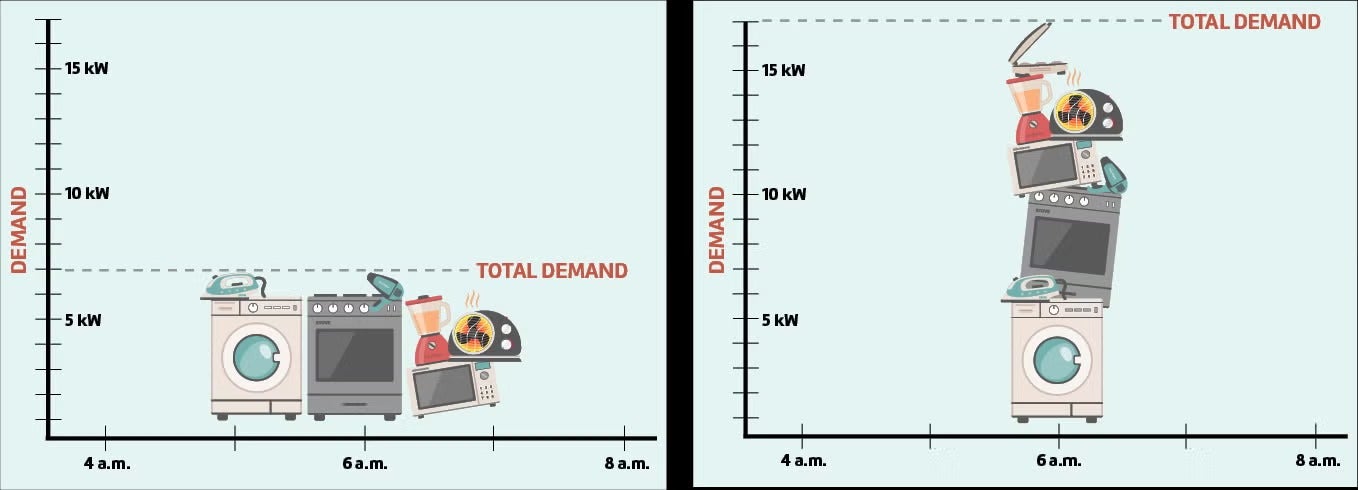Beginning May 1, 2024 members will see a Demand Charge added to their bills
Under our current residential rate structure, we bundle the energy and the demand into one energy rate. However, you will now see a three-part billing with a base service charge, energy usage charge (kWh's) and demand charge (measured in kW).
The demand charge collects costs more accurately and fairly from members. This adjustment reflects the cooperative's need to size our electrical system based on the individual demand requirements of each member. It also gives you more control over your electric bill because you can reduce your demand by shifting usage to off-peak hours (9 p.m. - 6 a.m.), when the demand on the system is lower, or by spreading out the use of large appliances throughout the day.
What is the demand charge?
The demand charge is a fee based on the amount of electricity a member uses at a specific point in time. It is the maximum rate at which your household consumes electricity. Unlike energy charges, which are based on the total amount of electricity consumed (measured in kilowatt-hours), demand charges are related to the highest level of power usage within a specified time frame, often measured in kilowatts (kW.)
Riverland Energy measures demand in kilowatts (kW) in 15-min intervals. This means the 15-minutes your equipment is consuming (or “demanding”) the most electricity in a given month establishes your demand reading. The monthly demand charge is $1.00 multiplied by your highest amount of usage (in kilowatts) that occurred within one
15-minute period during the peak hours of 6 a.m. to 9:00 p.m. throughout the billing period.
The demand charge aligns costs more accurately and fairly for members since the co-op pays a premium for power used during peak hours, such as when we are heating or cooling our homes. This rate structure can provide members more control over their bills since it is possible to reduce demand by shifting use to off-peak hours (9 p.m. - 6 a.m.), or
shifting the use of major appliances during peak hours (6 a.m. to 9:00 p.m.) rather than running them at the same time, as shown in the illustration:



